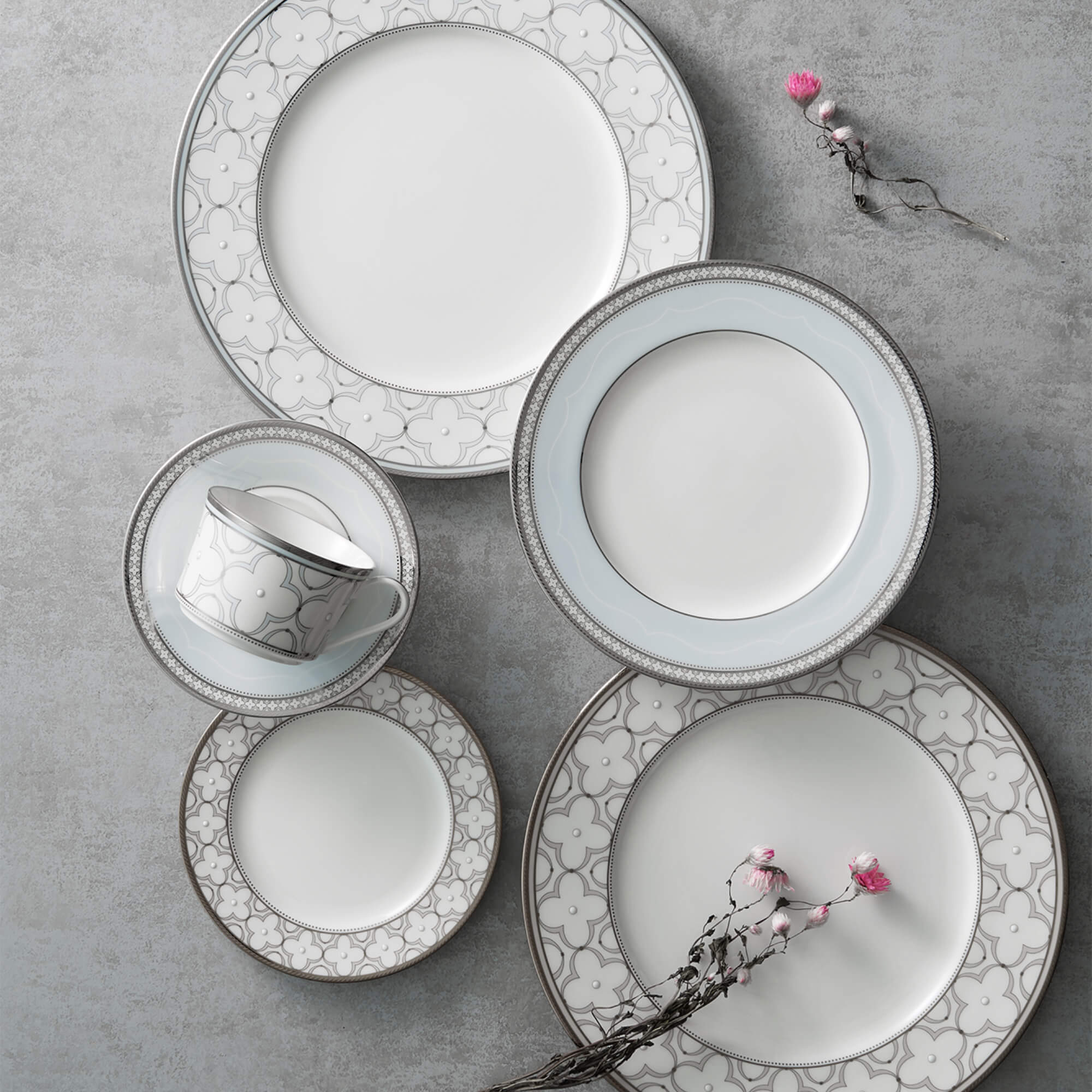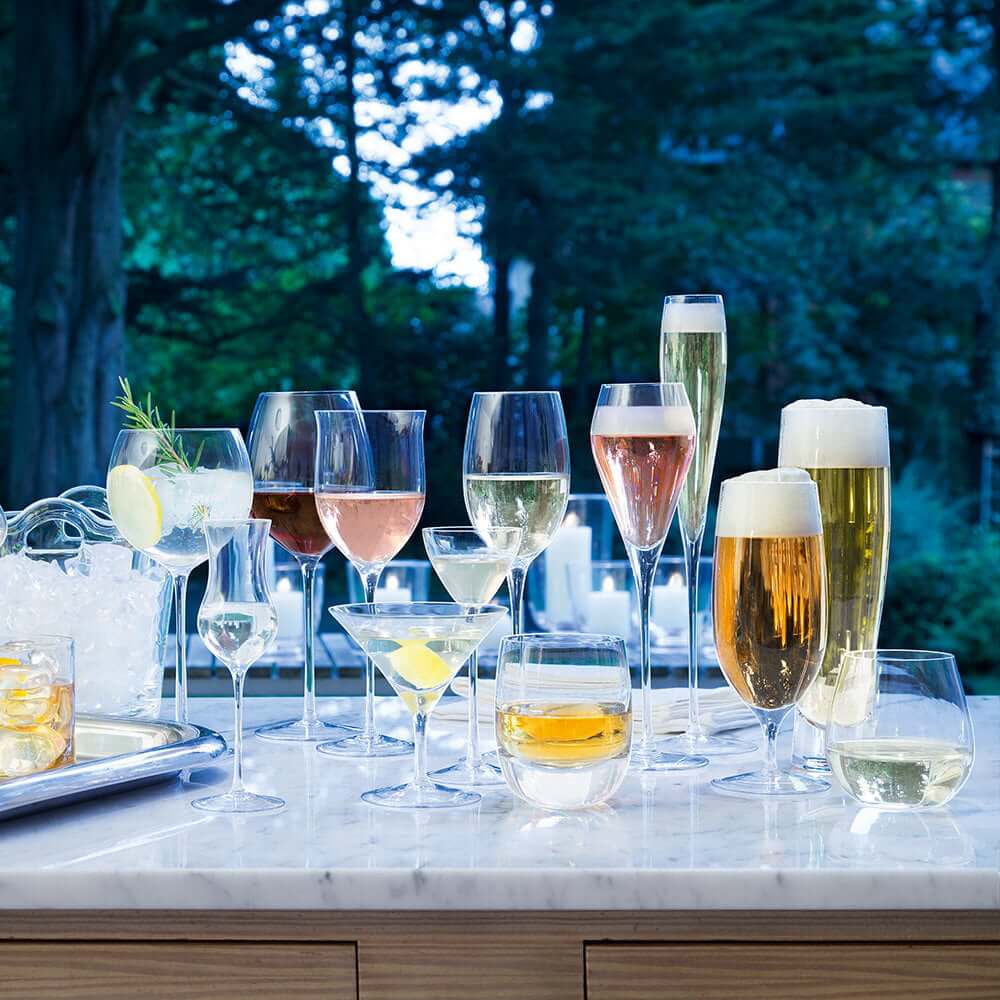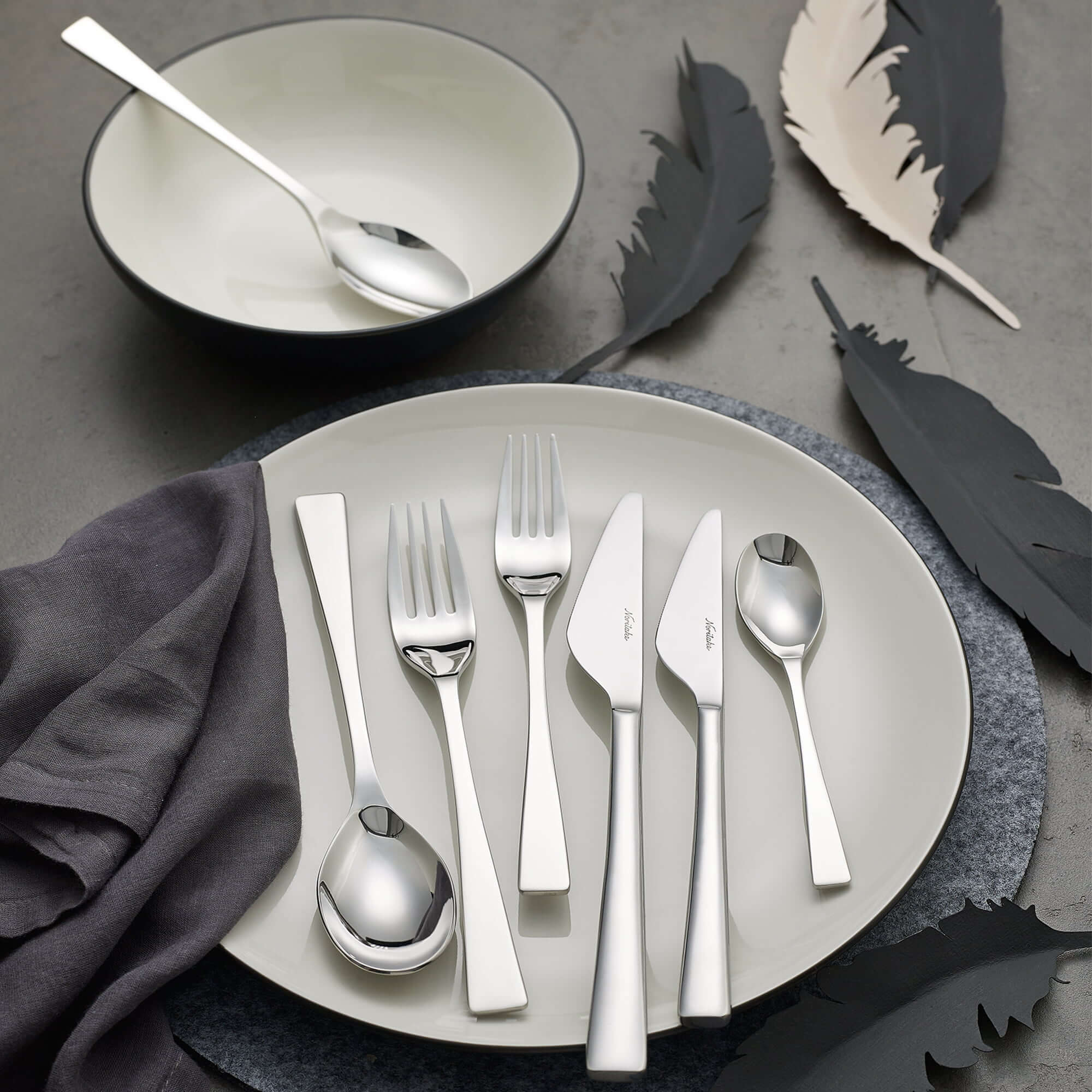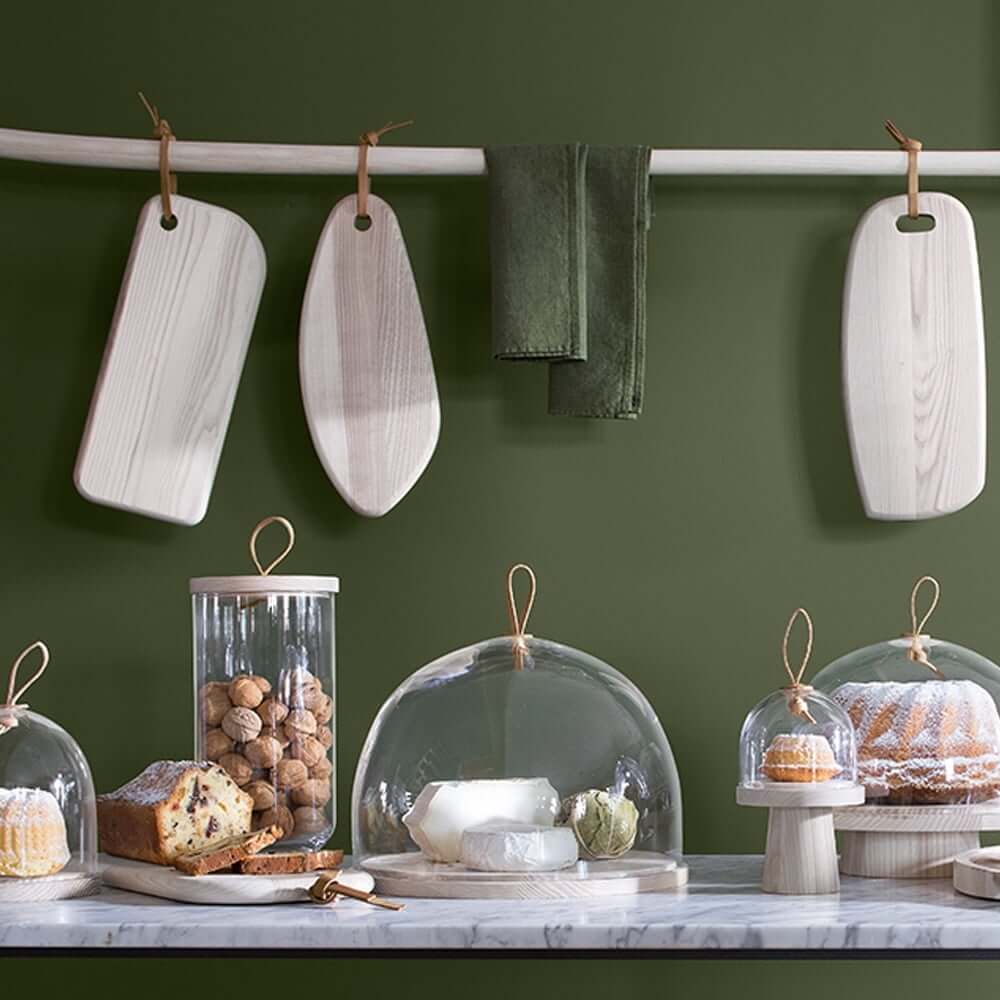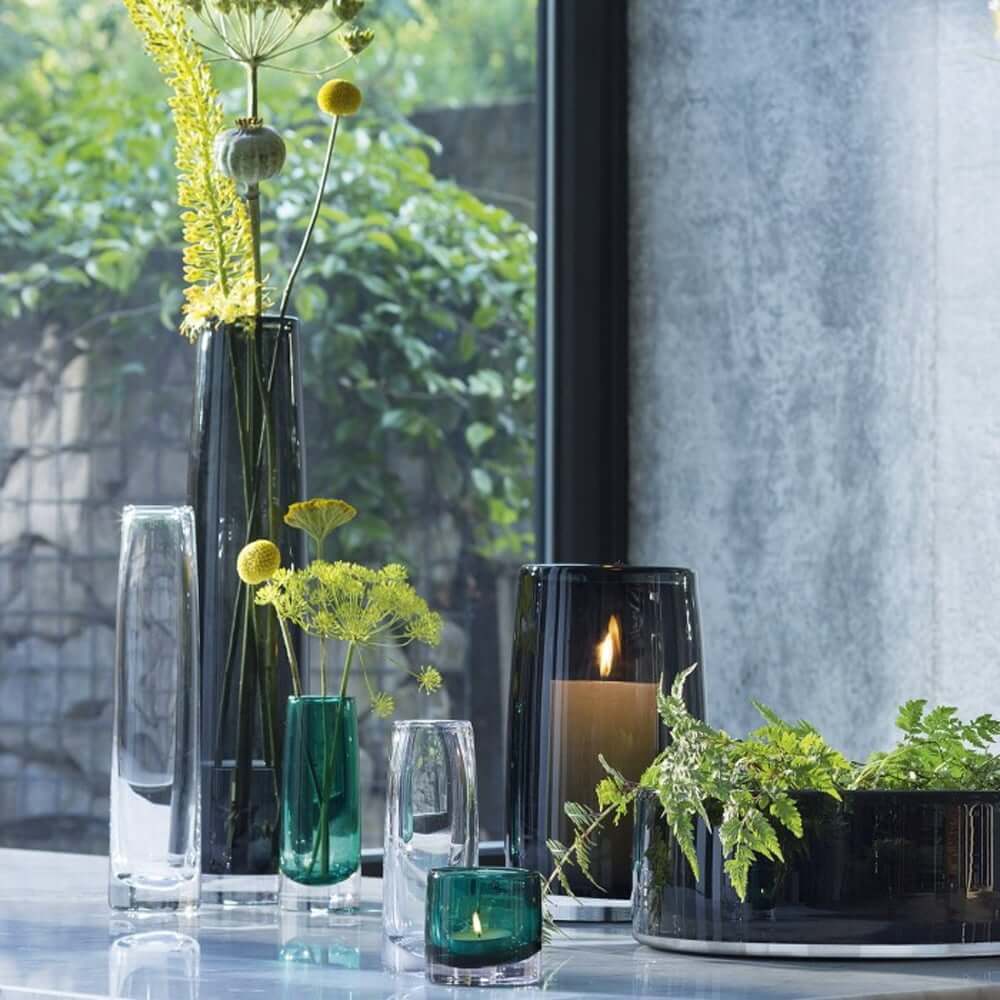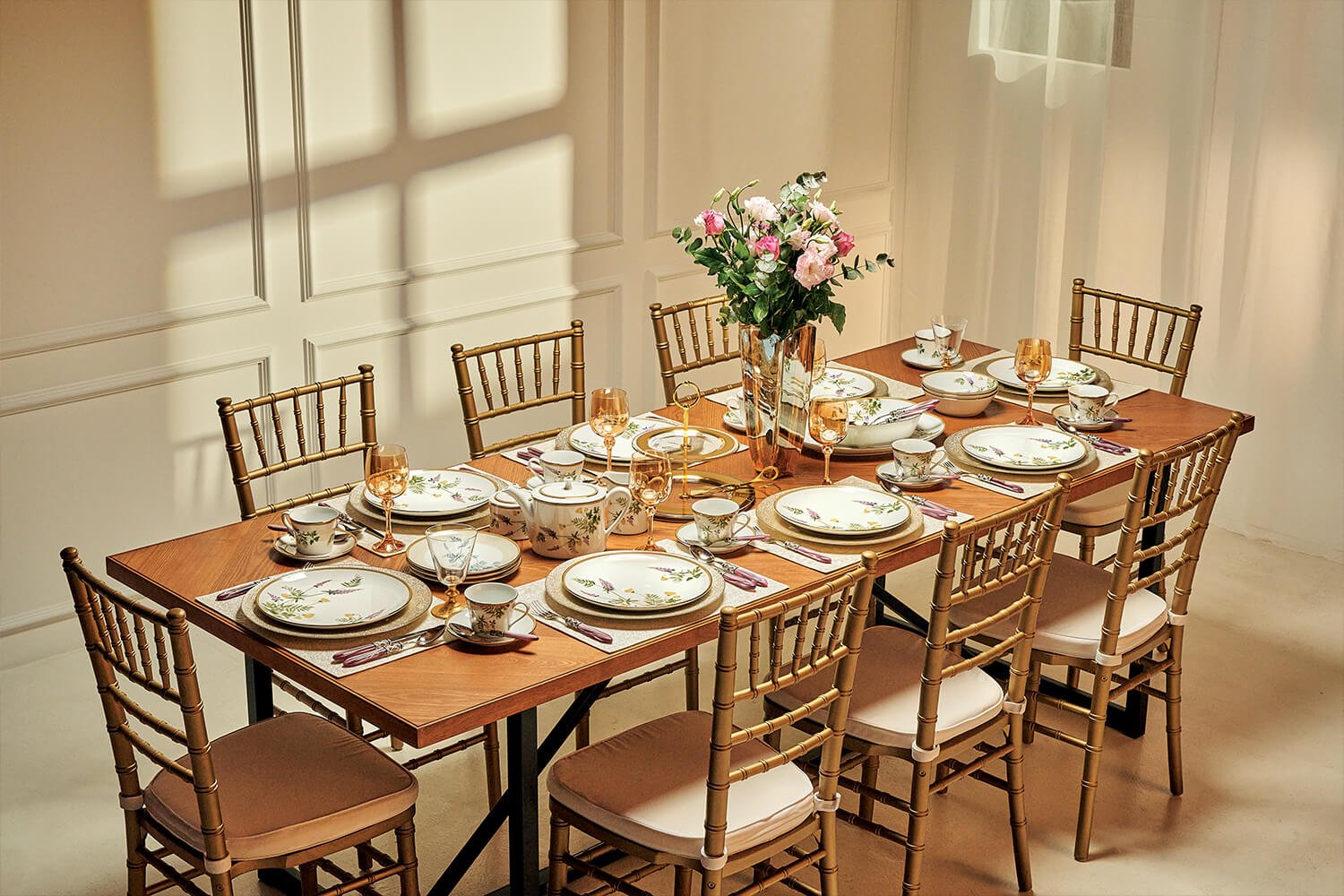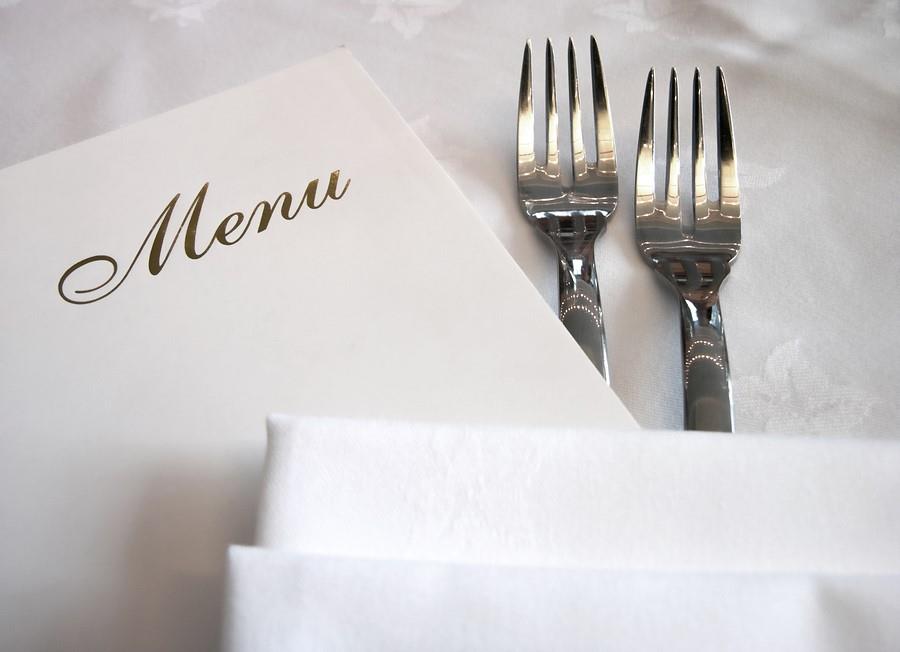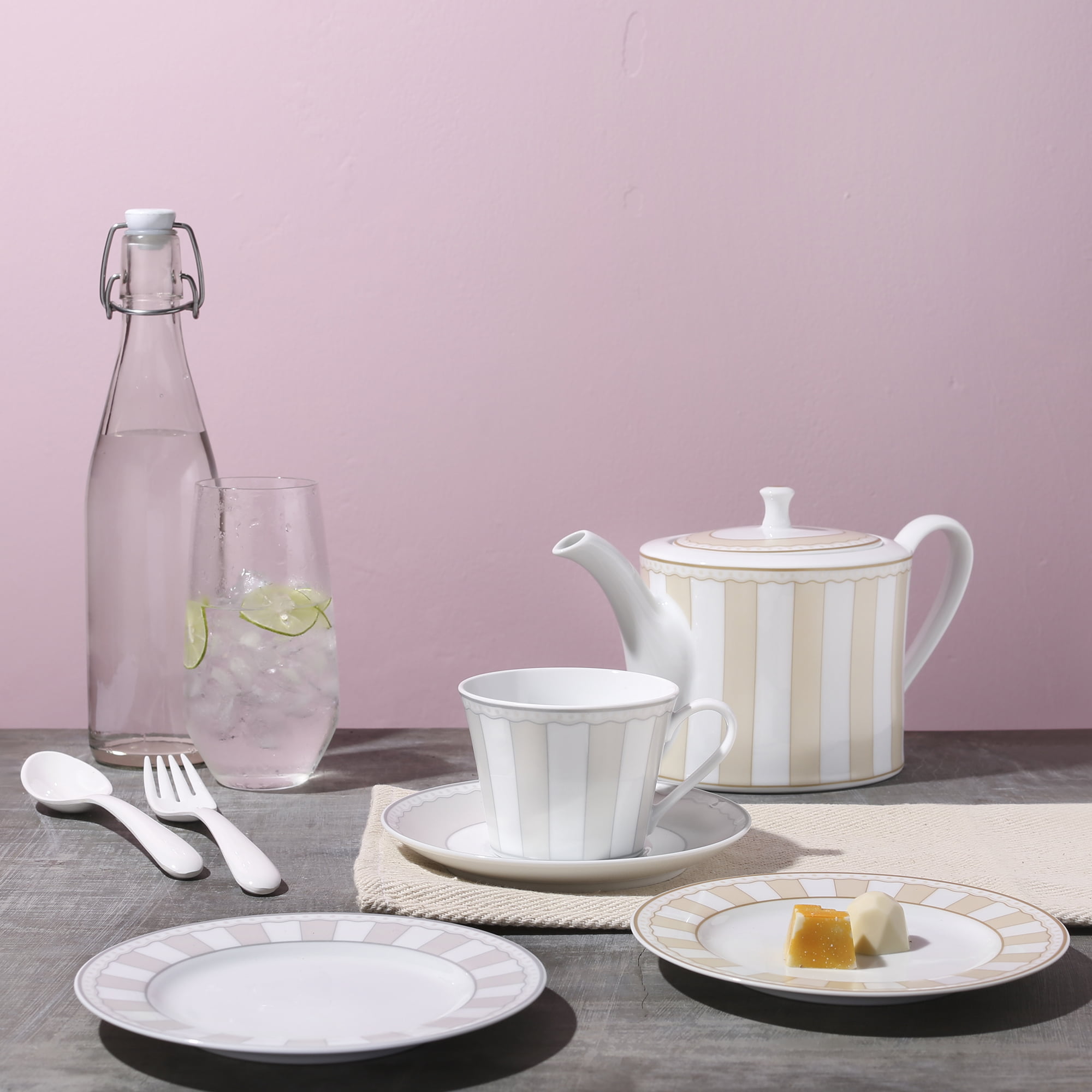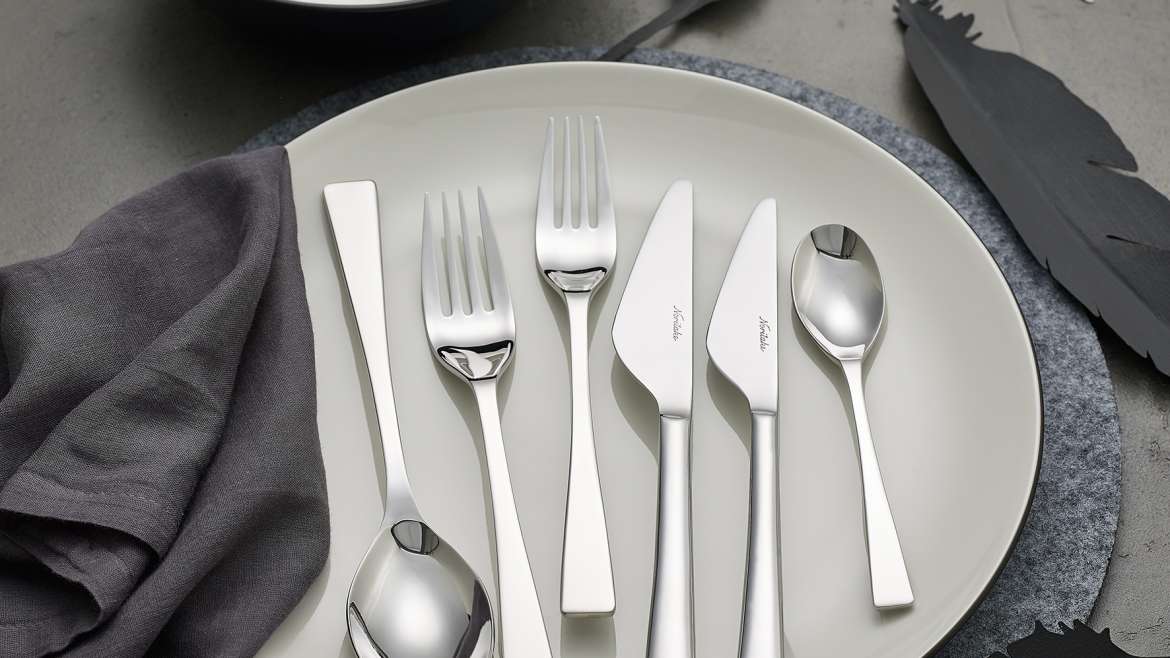

Deciding what a good quality cutlery set looks and feels like can be a tricky decision. Especially if you’re shopping online. Here we’ll explore a little bit more about what materials actually go into stainless steel flatware. And how to identify the best quality cutlery sets for your needs. This guide covers traditional silver as well as colourful cutlery sets.

WHY IS STAINLESS STEEL USED FOR CUTLERY?
Stainless steel is an alloy. One that is safe and strong enough to withstand daily use for something like cutlery. In flatware it usually features standard percentages of chromium and nickel that help to give your cutlery its strength and finish.
You’ll often find cutlery compositions referred to by numbers. Basically, these numbers tell you the percentages of chromium and nickel that your cutlery features (keep reading below for more).
Chromium gives anti-corrosion properties and helps to keep your flatware rust free. Nickel will help to give your flatware a beautiful shiny finish as well giving some additional rust resistance. Generally the more of both these materials in the cutlery, the stronger and more durable those pieces will be.
 HOW ARE COLOURED CUTLERY SETS DIFFERENT?
HOW ARE COLOURED CUTLERY SETS DIFFERENT?
They’re not! Well not the basis of them anyway. The majority of coloured cutlery sets are still made from stainless steel (unless they are real gold or copper). But they are then usually colour coated in a food-safe process called PVD (physical vapour deposition).
The composition of the stainless steel materials and the finishing still has high importance when determining the quality of a coloured cutlery set. However, the main things that will be of concern with these will be scratching (where the silver shows from underneath). And the durability of the colour.
Rose Metallics coloured cutlery sets are manufactured with the highest attention and care on both the materials and the colour finishes used.

THE CUTLERY GRADE IS HUGELY IMPORTANT WHEN DETERMINING QUALITY
A cutlery grade refers to its overall features including its durability & strength. And other things like its ability to withstand scratching, bending & general wear and tear.
Cutlery grades will often be subjective. But you should look out for details on stainless steel composition, polish & finish and other details like comfort and style.
MOST EXPENSIVE STAINLESS STEEL CUTLERY COMPOSITION
Or why some cutlery sets are more expensive…and how they contribute to “good quality”.
18/10 stainless steel:
This is the composition of cutlery with the highest proportion of chromium and nickel. The 18 represents the amount of chromium and the 10 refers to the nickel. You should expect solid build, with long-lasting and high shine polish on your cutlery if you choose this composition.
18/8 stainless steel:
This composition type can be a bit misleading as it’s essentially the same as 18/10 stainless steel. The percentages of chromium and nickel contained in both 18/10 and 18/8 flatware have a minimal variation allowance. That means they can often end up around the same.
You might find that an 18/8 cutlery set feels slightly less sturdy in the fork tines. Or flimsier in the handles. Though this is often more down to the style and cut of the cutlery. But otherwise this grade will also provide good durability, excellent anti-corrosion properties and quality shine.

304 stainless steel:
The “18” numbers refer to the European system for cutlery composition. You may also see the US “3” or “4” series. Whilst not exactly the same as the above, the stainless steel will have almost identical properties. It is just listed under a different number. The US grade 304 is the equivalent of the European 18/10.
MID RANGE STAINLESS STEEL CUTLERY COMPOSITION
18/0 stainless steel:
As above, the 18 represents the chromium and will still give good rust resistance for everyday cutlery use. However, without the added nickel you may find the finish is duller. Or becomes duller more quickly.
The quality of this stainless steel is still excellent but if a dulling silver is something that might bother you. Then you could consider the options of a different colour and finish.

430 stainless steel:
Like 304, 430 refers to the US numbering system and is the equivalent of 18/0 stainless steel.
LOWER RANGE STAINLESS STEEL CUTLERY COMPOSITION
We’re saying lower range, it doesn’t necessarily mean low standard! This is however the cheaper end of the composition scale.
13/0 stainless steel:
You guessed it! This means the cutlery features c. 13% chromium and no nickel. 13/0 stainless steel is nearly always used in the knives of cutlery sets or kitchen knife sets. This is because the lower percentage of chromium and no nickel allows a better forging on the knife blade. And a blade that will stay sharper for longer. The knives in any composition set are probably still made of 13/0 stainless steel.
WHAT ELSE DECIDES GOOD QUALITY CUTLERY?
So we’ve explored the basics on the composition of stainless steel cutlery. The composition alone will not tell you whether your chosen set is good quality.
Time to bust some myths on how to choose the quality of your cutlery purchase.
18/10 OR 18/8 STAINLESS STEEL CUTLERY SETS WILL NOT NECESSARILY BE HEAVIER.
The weight of your cutlery can have a direct impact on the perception of quality. This isn’t determined solely by the composition, but mainly by the amount of steel that’s used.
If the style has a thinner handle for example, the pieces are likely to feel fairly light-mid weight whether it’s 18/10 or not. You will find excellent quality 18/0 cutlery sets that may well be heavier.
The real test comes in the feel and smoothness of the finish.

CHEAPER DOESN’T GUARANTEE LOW QUALITY. BUT IT DOESN’T NECESSARILY MEAN GOOD QUALITY EITHER!
Probably the biggest determining factor in choosing a good quality cutlery set comes down to the manufacturing. This features heavily in deciding a cutlery grade. It doesn’t matter what composition of materials are used if the manufacturing quality is poor.
You will find many examples of cheap unbranded cutlery on marketplace and auction sites. You can also find cheap branded cutlery. With both of these you run the risk of a poorer cutlery finish.
This might include the odd sharp or jagged edge. Large, noticeable scratches or bent pieces. And pieces that dull or lose their colour very quickly. This happens because to achieve the lowest prices, corners may sometimes need to be cut.
SO THERE YOU HAVE IT.
Some stainless steel compositions are more expensive and may generally provide a better overall quality of material. If you’re keen on silver flatware, then the more premium 18/10 composition is the way to go.
In general however, if good quality is more important for you than price then you should always stick to branded cutlery that is mid-premium grade. These may be sets of 18/10 or 18/0, but will have additional quality guarantees that have gone into the manufacturing and finishing processes.

